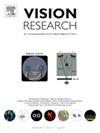听觉等效的连续变化的视觉刺激能改善节拍同步吗?支持视觉是感觉运动计时中可靠的模式的证据
IF 1.4
4区 心理学
Q4 NEUROSCIENCES
引用次数: 0
摘要
尽管离散的听觉刺激(如音调)与离散的视觉刺激(如闪光)相比,在时间上与感知到的规则节拍同步的可变性要小得多,但最近在节奏同步研究方面的进展表明,当使用连续移动的视觉刺激时,视觉节奏同步可以大大改善,并与听觉音调相媲美。因此,有人认为,情态的差异是节拍同步的重要因素,但不一定是主导因素。然而,对于支持听觉优势存在疑问,因为将连续变化的视觉刺激与离散的听觉刺激进行比较被认为是不公平的。在这里,基于一个空间位移随恒定加速度连续变化的周期性收缩环,我们在听觉领域设计了一个等效物:一个振幅随相同大小的加速度连续变化的调幅声音。结果表明,调幅声的节拍同步性能不优于单音和收缩环。本研究结果支持视觉是一种可靠的感觉运动时间加工方式。本文章由计算机程序翻译,如有差异,请以英文原文为准。
Could an auditory equivalent to a continuously varying visual stimulus improve beat synchronization? Evidence supporting vision as a trustworthy modality in sensorimotor timing
Although synchronization to a perceived regular beat in time has been established to be much less variable for discrete auditory stimuli, such as tones, than for discrete visual stimuli, such as flashes, recent advances in beat synchronization research have demonstrated that visual beat synchronization can be substantially improved and become comparable to auditory tones when employing continuously moving visual stimuli. It therefore has been suggested that the difference in modality is an important but not necessarily dominant factor for beat synchronization. However, doubts exist in favoring auditory dominance, as comparing continuously varying visual stimuli with discrete auditory stimuli is considered unfair. Here, based on a periodically contracting ring for which the spatial displacement continuously varied with a constant acceleration, we devised an equivalent in the auditory domain: an amplitude-modulated sound whose amplitude continuously varied with an acceleration of the same magnitude. The results showed that beat synchronization performance of the amplitude-modulated sound was not greater than that of the tone or the contracting ring. The present finding supports that vision is a trustworthy modality for sensorimotor timing processing.
求助全文
通过发布文献求助,成功后即可免费获取论文全文。
去求助
来源期刊

Vision Research
医学-神经科学
CiteScore
3.70
自引率
16.70%
发文量
111
审稿时长
66 days
期刊介绍:
Vision Research is a journal devoted to the functional aspects of human, vertebrate and invertebrate vision and publishes experimental and observational studies, reviews, and theoretical and computational analyses. Vision Research also publishes clinical studies relevant to normal visual function and basic research relevant to visual dysfunction or its clinical investigation. Functional aspects of vision is interpreted broadly, ranging from molecular and cellular function to perception and behavior. Detailed descriptions are encouraged but enough introductory background should be included for non-specialists. Theoretical and computational papers should give a sense of order to the facts or point to new verifiable observations. Papers dealing with questions in the history of vision science should stress the development of ideas in the field.
 求助内容:
求助内容: 应助结果提醒方式:
应助结果提醒方式:


